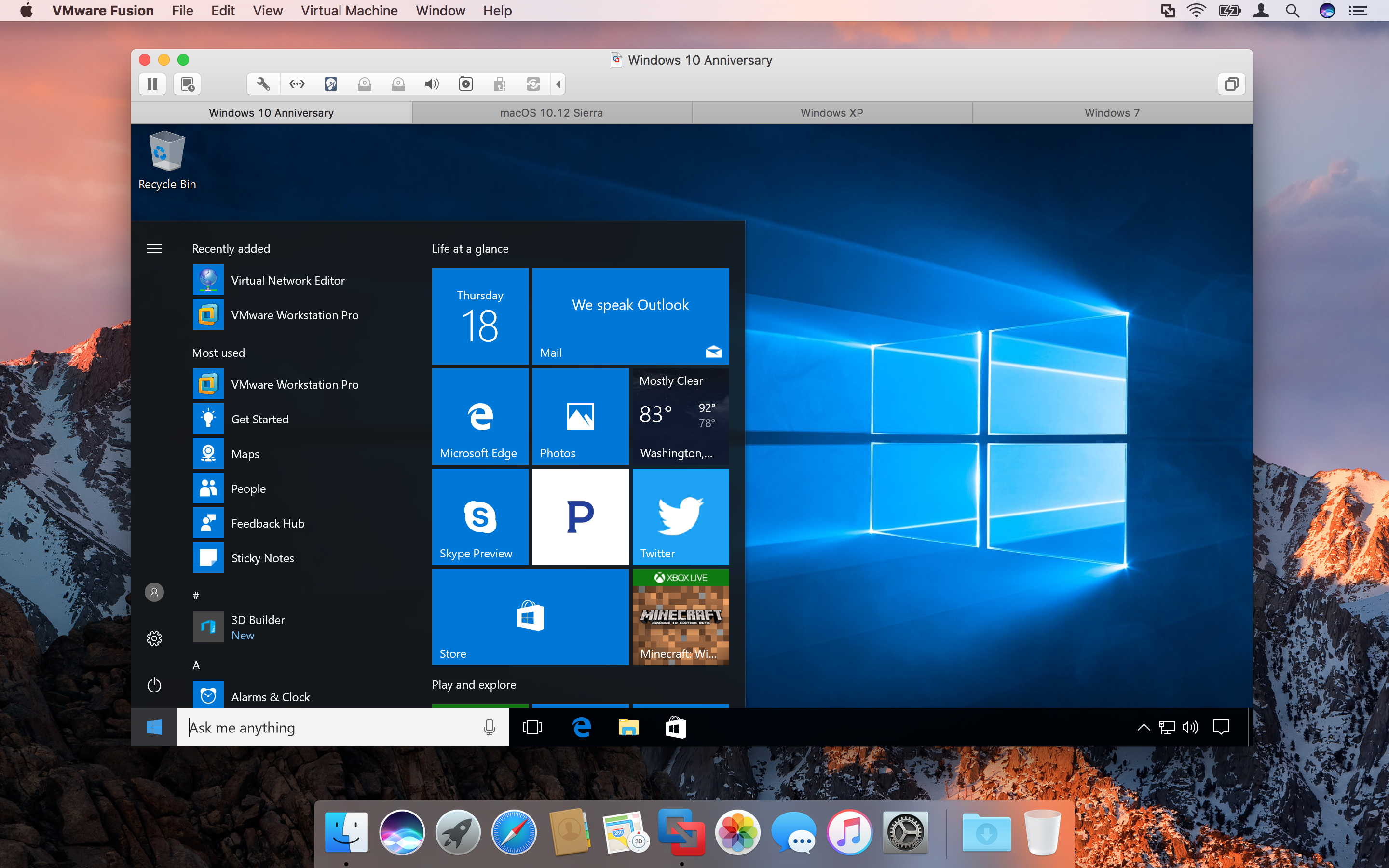

- #Vmware for mac to run linux install#
- #Vmware for mac to run linux full#
- #Vmware for mac to run linux password#
- #Vmware for mac to run linux download#
- #Vmware for mac to run linux windows#
Change “64G” to your prefered disk size ( min. NOTE: Change “MyDisk” to your preffered disk name. Create an empty hard disk using qemu-img, changing the name and size to preference: qemu-img create -f qcow2 MyDisk.qcow2 64G The default installation uses macOS Catalina, but you can choose which version to get by adding either -high-sierra, -mojave, or -catalina.
#Vmware for mac to run linux download#
Run jumpstart.sh to download installation media for macOS (internet connection required).
#Vmware for mac to run linux install#
For Fedora: sudo dnf install qemu qemu-img python3 python3-pipģ.For openSUSE Tumbleweed: sudo zypper in qemu-tools qemu-kvm qemu-x86 qemu-audio-pa python3-pip.For Void: sudo xbps-install -Su qemu python3 python3-pip.For Arch and Arch based distros: sudo pacman -S qemu python python-pip.For Ubuntu, Debian, Mint, and PopOS: sudo apt-get install qemu-system qemu-utils python3 python3-pip.You might also want to install git (not shown in the screenshot ). ALSO READ HOW TO: Install macOS Big Sur With OpenCore on Linuxġ.ALSO READ HOW TO: Install macOS Catalina in a Docker Container on Linux.ALSO READ HOW TO: Dual Boot macOS and Linux.KVM converts Linux into a type-1 (bare-metal) hypervisor and requires a processor with hardware virtualization extensions, such as Intel VT or AMD-V. Kernel-based Virtual Machine (KVM) is a virtualization module in the Linux kernel that allows the kernel to function as a hypervisor. Use the drop-down menu to make your selection.A quick tutorial on how set up a simple macOS VM in QEMU, accelerated by KVM.This is a good choice for individuals who want complete access to their files, and who aren't worried about unauthorized access.
#Vmware for mac to run linux windows#
This option allows files and folders in your Home directory to be edited or deleted from within Windows it also allows you to create new files and folders in the Home directory from within Windows. It provides access to files but protects them by not allowing changes to be made from within Windows. This is a good middle-of-the-road choice. Your Home directory and its files can only be read, not edited, or deleted.
#Vmware for mac to run linux password#

This will be the default administrator account for XP or Vista.

If you select this option, you will need to supply the pathname for the existing virtual disk. This option lets you use a virtual disk that you created earlier. This option is only necessary for MS-DOS, Windows 3.11, or other older operating systems. Fusion will split your hard drive into multiple sections that FAT and UDF drives can use each section will be no larger than 2 GB. This option is primarily used for FAT or UDF drive formats, which don't support large files. The tradeoff is that you're giving up space that could be used elsewhere until the virtual machine needs it.
#Vmware for mac to run linux full#
If you prefer, you can choose to create the full virtual disk now, for slightly better performance. This option starts with a small drive that can expand, as needed, up to the disk size you specified above. Fusion uses a dynamically expanding virtual drive.

Fusion will display a suggested size that's based on the OS you chose earlier. Specify your preferences for the virtual hard disk that Fusion will create for your virtual machine.


 0 kommentar(er)
0 kommentar(er)
